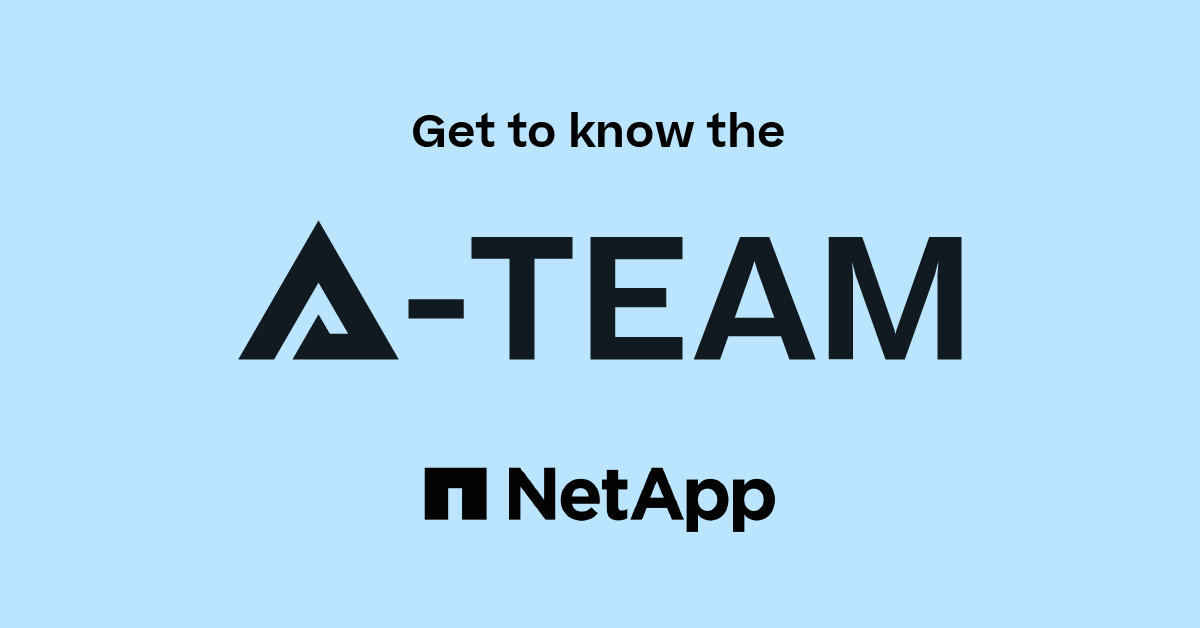NetApp Console
- Home
- :
- NetApp Data Services
- :
- NetApp Console
- :
- Why does NetApp thinks Cloud Manager is OK in its current state?
NetApp Console
- Subscribe to RSS Feed
- Mark Topic as New
- Mark Topic as Read
- Float this Topic for Current User
- Bookmark
- Subscribe
- Mute
- Printer Friendly Page
Why does NetApp thinks Cloud Manager is OK in its current state?
- Mark as New
- Bookmark
- Subscribe
- Mute
- Subscribe to RSS Feed
- Permalink
- Report Inappropriate Content
So we have licenses to roll out Ontap Cloud and it requires the use of Cloud Manager. But the state of this software, specific the installer leaves me really questioning our decission to aquire these licenses.
I have issues with the following things:
- Supported on CentOs/RedHat 7
- Installer requires direct Internet access to download packages like MySQL Community Server
- Installer fails because of default OS install of mariadb-libs, which is required by PostFix and Net-SNMP. Mariadb-libs conflicts with the MySQL Community Server the installer tries to install.
When asking support about it the reply leaves a whole lot of questions about this product.
- Mark as New
- Bookmark
- Subscribe
- Mute
- Subscribe to RSS Feed
- Permalink
- Report Inappropriate Content
Hi there!
Sorry to hear it's hasn't been a great experience for you.
Targeting software for a specific Linux release is a tricky one for all vendors to negotiate. Compiling from source will generally leave more of a workload for users than providing RPMs. RedHat is a common platform used in enterprise, due to the service contracts available, and the availability of CentOS as a non-commercial platform provides a lot of options.
My understanding is that Internet access is also required to setup the broker to connect to the hyperscaler hosting the cloud instance of ONTAP, so I suspect that is non-negotiable.
Regarding RPM interdependencies/exclusivity, I have found the two cases you and your co-worker have opened on this and can see you have been working on this issue with Aviv from our product development team since June. While the two releases - mariadb and mysql community server provide similar libraries in similar places, from a neutral point of view, I must assume that our development team has a reason for supporting one and not the other at this time, and I encourage you to maintain communications with Aviv to see if there are any opportunities for a future release to support either.
In the meantime, I can only suggest to deploy a virtual machine in the manner specified in order to operate this infrastructure.
- Mark as New
- Bookmark
- Subscribe
- Mute
- Subscribe to RSS Feed
- Permalink
- Report Inappropriate Content
NetApp's documentation says that this software is certified to run on RedHat/CentOS 7. So please take a RedHat/CentOS 7 install. Many installs will include things like Postfix (MTA to be able to send out email, such as daily reports) and net-snmp (so that the system can be monitored via SNMP). I consider both of these pieces of software as required for a standard install of RedHat/CentOS. These two packages have a dependency of mariadb-libs.
Now NetApp Cloud Manager requires Internet access not because of operation but because it goes to download additional RPMs. Some of these are packages included in RedHat/CentOS and I was able to work around that by installing them by hand. To determine what is needed, I extracted the install script from the provided installer. Now this install script also wants to download and install from mysql.com the MySQL Community Server instead of using the one provided by RedHat/CentOS.
Because of this it fails with conflicts on mariadb-libs. If this installer insist on using the MySQL Community Server version, it should include it instead of having to download it or provide what to download and install. It also should use the relocate options of RPM to install it into another location and use LDCONFIG to set the library include path.
This whole installer to me is a very sloppy job. An installer should never insist on direct Internet access, it always should provide a way to work around that.
And the answer from NetApp support we have gotten "Deal with it, remove postfix/net-snmp, etc", is not acceptable. At this point we will just have to request a refund of our money and find a different solution for file serving.
Also we for example have connection to AWS via direct connect, so for this instance of Cloud Manager there is no reason to talk directly to the Internet. I have not checked the AWS Linux AMI if it installs by default mariadb-libs in conjunction with Postfix and net-snmp, but we prefer to have Cloud Manager installed on Prem.
Another way for NetApp to provide Cloud Manager would be as a real appliance, i.e. VMware OVA or AWS AMI. Then NetApp can controll what ever packages to install. It would also not require direct Internet access.
- Mark as New
- Bookmark
- Subscribe
- Mute
- Subscribe to RSS Feed
- Permalink
- Report Inappropriate Content
As someone who has 19 years experience with RedHat, I understand where you're coming from, and I hope you've been able to share these insights and suggestions with the developer team that our support team have put you in touch with.
I am outside of this team, but I am sure there is a exercise in developmental priority vs userbase that they need to make, and we know from deployment metrics that this is fit for purpose and troublefree for most customers, so I suspect it might be difficult to justify this as a short term change, however this sort of feedback does help guide future directions.
Best regards,
Alex.

